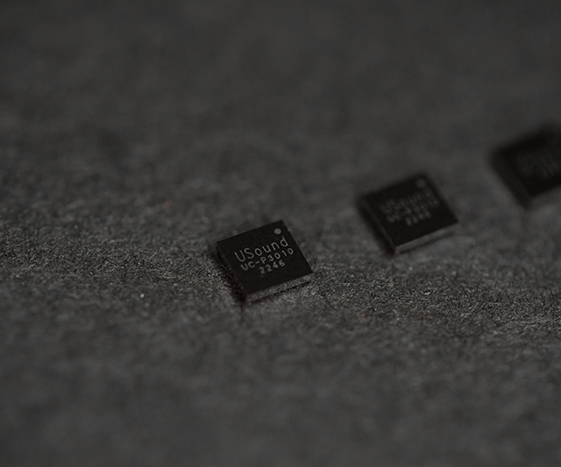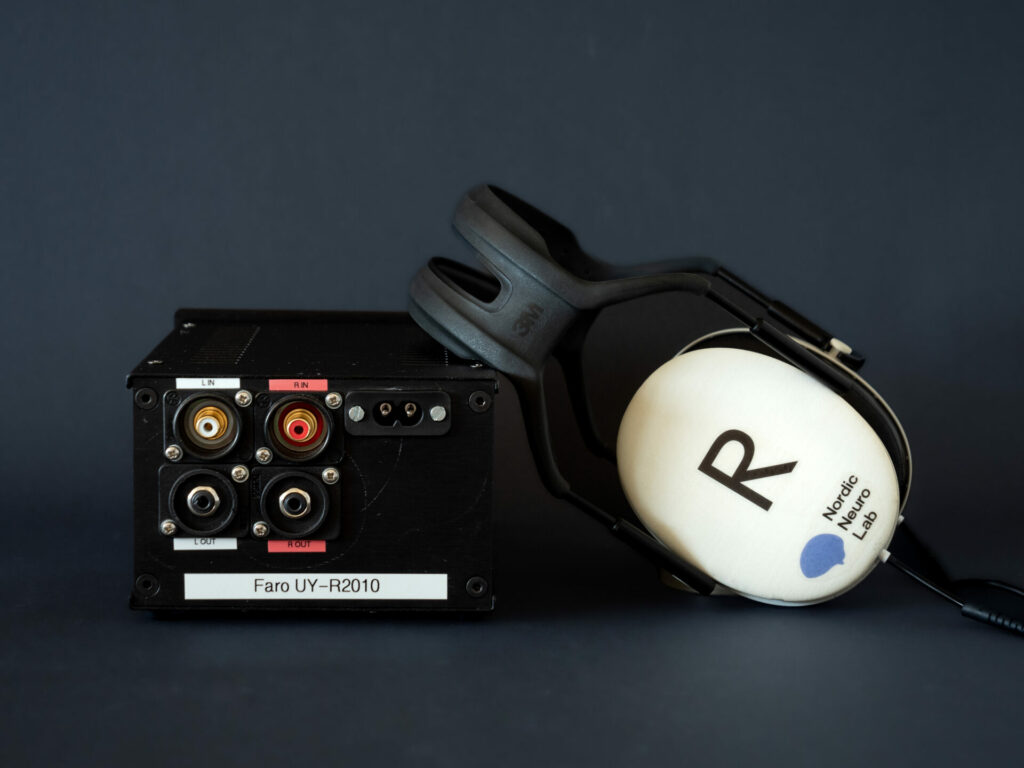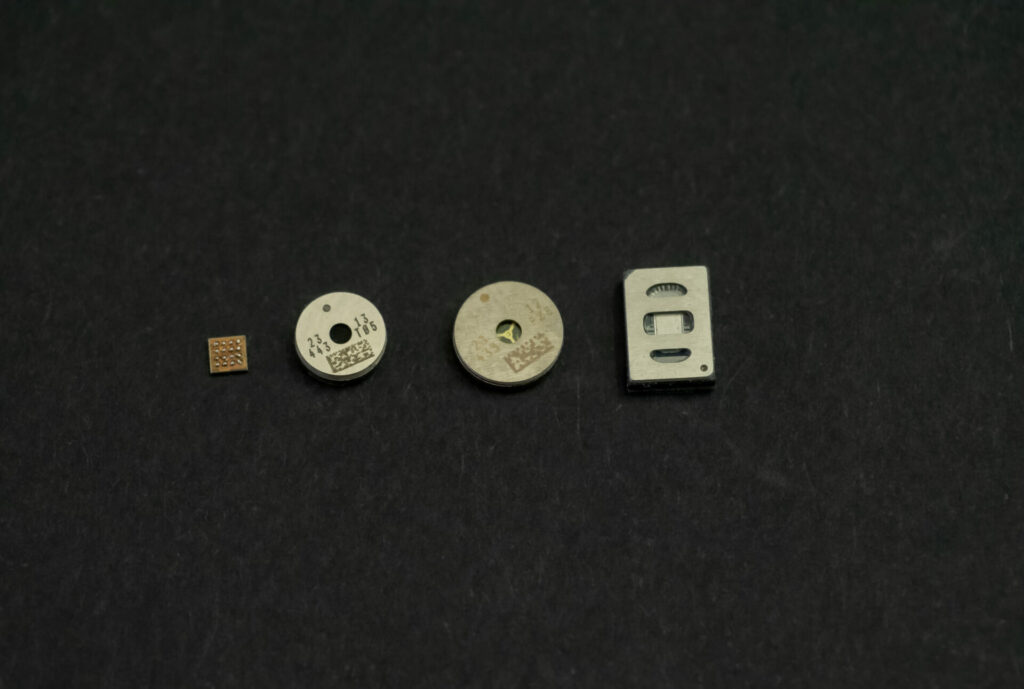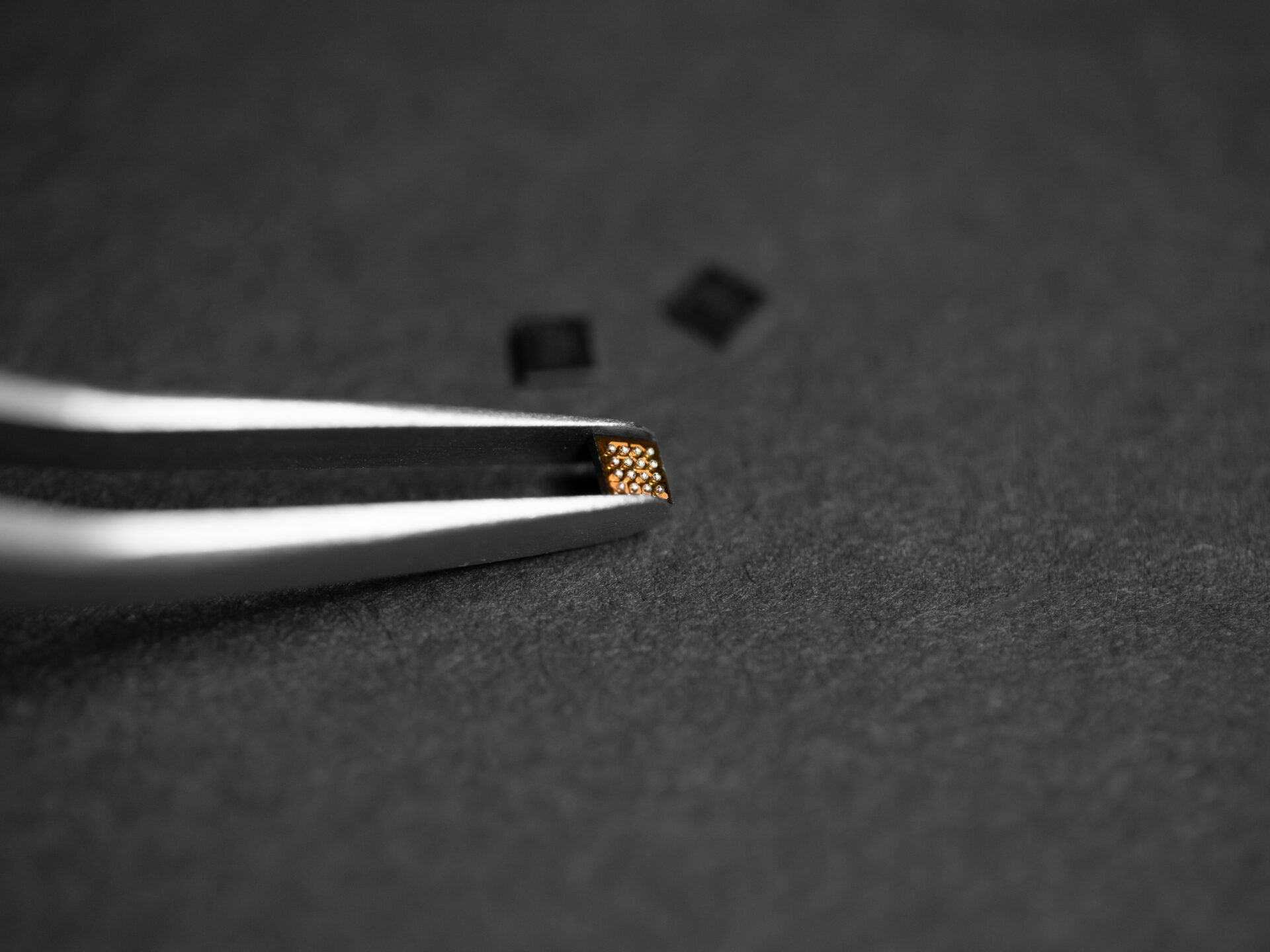USound’s Tarvos 1.0 UC-P3010 is a high-voltage driver engineered for piezoelectric actuators, purposefully tailored for applications with stringent power limitations, including battery-powered systems like wearable and portable devices. It can provide an impressive 28 VPP output drive while maintaining a minimal quiescent current draw below 1 mA from a Li-ion battery.
Moreover, Tarvos 1.0 amplifier is distinguished for its exceptional attributes, encompassing low Total Harmonic Distortion plus Noise (THD+N) and minimal output noise. These distinctive qualities position it as an ideal choice for acoustic applications, particularly when utilized in conjunction with USound MEMS speakers.

Tarvos 1.0 Features
Tarvos 1.0 is an exemplary class H driver, integrating an advanced boost converter designed to achieve the following features:
- Exceptional Power Efficiency: Tarvos 1.0 demonstrates superior power efficiency, functioning seamlessly within a supply voltage range of 2.7 V to 5.5 V. With a minimal shutdown current of 0.5 μA when inoperative, a sub mA quiescent current in active mode, and an efficient power draw during operation, even at elevated volume levels.
- High-Amplitude Output: Tarvos 1.0 provides an impressive 28 VPP output, covering the entire hearing frequency range from 20 Hz to 20 kHz. Additionally, it supports high-resolution audio and ultrasound applications, effortlessly reaching frequencies up to 40 kHz, exhibiting low voltage attenuation beyond this frequency range.
- Customizable Parameters: The driver offers comprehensive configurability through I2C communication, empowered by electronic fuses (e-fuses). Parameters such as gain settings (18 dB, 24 dB, or 30 dB), boosting voltage (VBST up to 14 V), DC Bias (ranging from 0 V to VBST), and meticulous power consumption adjustments, ensure a tailored fit for specific application requirements.
- Low Total Harmonic Distortion plus Noise (THD+N): Tarvos 1.0 maintains a remarkably low THD+N of 0.2% at 1 kHz (20 kHz measurement bandwidth), spanning the entire amplitude range up to 27VPP. This ensures pristine audio quality, also thanks to virtually imperceptible output noise levels (≤ 75 μVrms A-weighted at any gain) which are with USound speakers.
- High Signal-to-Noise Ratio (SNR): With an SNR above 100 dBA, Tarvos 1.0 guarantees audio clarity and fidelity.
Tarvos 1.0 Applications
Thanks to its inherent features, Tarvos amplifier is well-suited for driving piezoelectric audio actuators, such as USound MEMS speakers, within battery-powered systems. Additionally, its compatibility also extends to ultrasound applications.
Hi-fi Audio Systems
USound MEMS speakers are distinguished as the thinnest speakers available on the market. They exhibit an exceptional audio response, characterized by a unique and extended frequency range, aligning perfectly with the demands of high-resolution audio.
Often touted as a hallmark of audio excellence, high-resolution audio holds a pivotal role in the world of high-fidelity (hi-fi) audio systems. Its proponents argue that high-resolution audio formats offer an unparalleled listening experience characterized by enhanced clarity and depth, delivering audio quality beyond that of a standard CD. Studies on high-resolution audio perception further supports its importance, revealing a small but statistically significant ability to distinguish standard from high-resolution audio, especially to trained listeners.
Furthermore, Tarvos 1.0’s exceptional power efficiency positions it as an ideal solution for True Wireless Stereo (TWS) earbuds or Over-The-Counter (OTC) hearing aids, where long battery life is crucial.
Magnetic-Restricted Applications
Piezoelectric MEMS speakers, with their immunity to magnetic fields, compact size, high efficiency, durability, and reduced heat generation, serve as an outstanding audio solution for magnetic-restricted devices and applications. When complemented by Tarvos 1.0, they form the optimal audio solution for delivering high-quality sound in applications where no ferromagnetic fields are allowed (such as MRI systems, satellites, etc.). Tarvos amplifier serves as a pivotal element in this solution, characterized by its ability to individually drive MEMS and mitigate challenges posed by magnetic interference through modest electromagnetic radiation and compatibility within magnetic systems.

Tarvos 1.0 is a great solution for MEMS-speaker-based MRI headphones.
Bone Anchored Hearing Aids
Bone-anchored hearing aids (BAHAs) have ushered in a new era of hearing assistance, bypassing traditional auditory pathways by transmitting sound vibrations directly through the skull to the inner ear. Within the realm of BAHAs, a range of modern solutions cater to diverse needs.
Percutaneous BAHAs: Known for secure connections, ideal for active individuals. An external processor attaches directly to the implant, ensuring reliable support, especially during physical activities.
Softband BAHAs: Non-invasive alternatives suitable for people who are ineligible for surgical implantation. A sound processor is mounted on an adjustable headband, providing flexibility with a slight compromise in stability compared to surgical options.
Transcutaneous BAHAs: A recent innovation offering discretion, ease of maintenance and excellent sound quality. The implant is discreetly placed beneath the skin, reducing visibility and enhancing comfort while minimizing the risk of skin complications.
It’s worth noting that some transcutaneous BAHAs employ piezoelectric transducers to transmit sound vibrations. These transducers could be efficiently driven by Tarvos, due to its exceptional power consumption and the ability to generate high-amplitude signals required for stronger vibrations. This synergy of technology not only improves the performance of transcutaneous BAHAs but also has a significant impact on the battery life of these devices. Enhanced power consumption management extends the lifespan of the batteries, which, in turn, enriches the quality of life for their users.
With longer-lasting batteries, individuals with hearing loss can enjoy extended usage periods without the constant need for battery replacements. This means fewer interruptions to daily activities, increased convenience, and reduced dependency on battery replacements, ultimately enhancing the overall experience and quality of life for BAHAs users.
Buzzers
Buzzers, as electroacoustic devices, play a crucial role in numerous electronic low cost systems and devices, providing audible alerts, notifications, and alarms when an electric current is applied. These devices come in various types, each distinguished by their unique operational principles and characteristics. It is worth noting that among these, piezoelectric buzzers exhibit notable advantages that set them apart from their counterparts (mainly electromagnetic buzzers).
- Electromagnetic Buzzers use electromagnets and an electric current to create a magnetic field that induces vibrations in a metal diaphragm, producing a buzzing sound.
- Piezoelectric Buzzers generate sound through a piezoelectric element’s mechanical deformation when an electric voltage is applied. Notable for:
- Energy efficiency, reducing power consumption.
- Compact and lightweight design, ideal for space-constrained devices.
- Reliability with an extended lifespan and fewer moving parts.
- Durability, resistant to shock and vibration for challenging environments.
In the realm of piezoelectric buzzers, the integration of Tarvos 1.0 as a dedicated piezoelectric driver elevates their performance to new heights. Tarvos 1.0, distinguished by its remarkable power efficiency and the capability to generate high-amplitude signals essential for robust vibrations, is well-suited for applications where power constraints are critical, such as battery-powered systems.
Ultrasound systems
Ultrasound technology has proven its versatility across a wide spectrum of applications, from environmental monitoring to underwater exploration and beyond. The effectiveness of ultrasound greatly depends on the capability of the driving electronics, and USound’s Tarvos 1.0 stands as a remarkable solution for this purpose. Tarvos 1.0 offers the ability to drive ultrasonic piezoelectric transducers, particularly those operating at low frequencies, covering the whole frequency range below a hundred kilohertz. What sets Tarvos 1.0 apart is its low power consumption, making it an ideal choice for battery-powered applications.
One notable feature of Tarvos is its integrated boost converter, which plays a crucial role in amplifying voltage levels efficiently. This boost converter allows Tarvos to take power from a battery source and elevate it to the necessary levels, ensuring that ultrasonic piezoelectric transducers receive the required voltage for optimal performance.
Applications that can benefit from Tarvos-driven ultrasonic piezoelectric transducers are diverse, spanning fields such as environmental monitoring, underwater exploration, distance measurement in unmanned systems, and more. Each of these applications relies on low-frequency ultrasound for specific purposes, and Tarvos 1.0, with its efficient power management and integrated boost converter, ensures that battery-powered systems remain practical and sustainable in the long run. This capability to boost voltage from a battery source enhances the overall functionality and versatility of Tarvos 1.0 across a wide range of ultrasound applications.

Other Applications
Beyond delivering exceptional audio experiences with minimal power consumption, Tarvos 1.0 can act as a driver for other applications, such as tiny motor control to slim haptic actuators.
Tarvos’ low power consumption is a standout feature, ensuring extended battery life in various devices. It excels in driving some of the smallest motor drivers, essential for robotics, automation, and electromechanical systems.
Moreover, Tarvos 1.0 represents the ideal choice in the realm of haptic feedback. It caters to the demands of small and slim haptic actuators, enhancing user experiences in wearables, smartphones, and compact consumer electronics. With Tarvos 1.0, battery-driven haptic devices operate for extended durations without the need for frequent recharging.
Tarvos 1.0 s’ adaptability expands the horizons of ultrasonic technology. While it excels in audio, it stands as a robust driver for a range of low-power applications, simplifying design and promoting energy efficiency. Tarvos 1.0 UC-P3010 unlocks the potential for versatile and eco-friendly solutions in the modern tech landscape, unleashing the limitless possibilities of piezoelectric drivers.
Interested in Tarvos 1.0 UC-P3010? Contact us for more information and to acquire Tarvos evaluation board for quick testing in the lab.

About the author
Manuel Arias Ruiz contributes to the innovation in products at USound, holding the position of Head of Hardware Development in the R&D department. With a foundation in Electrical Engineering and a background of over 15 years in electronic products and systems, Manuel leads activities related to new designs, provides crucial application support, and plays a vital role in shaping the company’s innovative endeavors. He has been with USound since 2017. LinkedIn


